Butterflies and Moths
Media
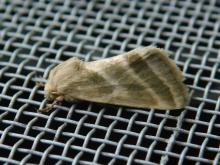
Species Types
Scientific Name
Schinia trifascia
Description
The three-lined flower moth is a common noctuid moth. Its caterpillars eat flowers and flower buds of false bonesets, Joe-Pye weeds, thoroughworts, and blazing stars.
Media

Species Types
Scientific Name
Psychomorpha epimenis
Description
The grapevine epimenis flies during daytime and would seem too colorful to be a moth, but a moth it is. They fly in springtime and love to visit wild plum blossoms.
Media

Species Types
Scientific Name
More than 12,000 species in North America north of Mexico
Description
Learn about moths as a group. What makes a moth a moth? How are moths different from butterflies? What are the major groups of moths?
Media

Species Types
Scientific Name
Polygonia progne
Description
The gray comma is easy to ID if you can see the underside: it is charcoal gray with many fine dark streaks, and its comma marking is L-shaped and narrows to a fine point at each end.
Media
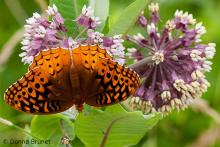
Species Types
Scientific Name
Speyeria cybele
Description
The great spangled fritillary is common and easily recognized. This glorious butterfly is often seen in city yards and gardens as it seeks flowers.
Media
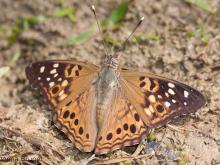
Species Types
Scientific Name
Asterocampa celtis
Description
The hackberry emperor eats hackberry leaves as a caterpillar. The adults fly erratically. They often alight on people to absorb sodium from sweat.
Media
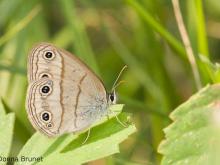
Species Types
Scientific Name
Megisto cymela
Description
The little wood satyr is an abundant butterfly found in Missouri’s open woodlands and brushy fields. Its bouncing flight has been called “skipping.”
Media
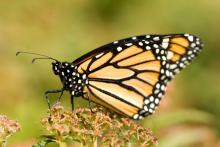
Species Types
Scientific Name
Danaus plexippus
Description
Monarchs are well-known butterflies distinguished by their relatively large size, rusty or orange wings with black veins, and black bodies. The larvae usually are found on milkweeds.
Media

Species Types
Scientific Name
Nymphalis antiopa
Description
The unmistakable mourning cloak is a familiar woodland butterfly in Missouri. Adults hibernate and are sometimes seen flying on warm, sunny days in winter.
Media
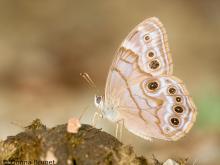
Species Types
Scientific Name
Enodia anthedon (syn. Lethe anthedon)
Description
The northern pearly-eye is grayish brown with dark eyespots. Of three pearly-eye species in Missouri, it is the most widespread.
See Also


Media

Species Types
Scientific Name
About 1,500 species in North America north of Mexico
Description
Adult caddisflies are mothlike. Their larvae are aquatic and build portable, protective cases out of local materials, including grains of sand, bits of leaves and twigs, and other debris.
Media

Species Types
Scientific Name
Corydalus cornutus
Description
Adult eastern dobsonflies are huge and mothlike, with large wings and a weak, fluttery flight. The fiercely predaceous aquatic larvae, called hellgrammites, are well-known to anglers, who often use them as bait.
About Butterflies and Moths in Missouri
Butterflies, skippers, and moths belong to an insect order called the Lepidoptera — the "scale-winged" insects. These living jewels have tiny, overlapping scales that cover their wings like shingles. The scales, whether muted or colorful, seem dusty if they rub off on your fingers. Many butterflies and moths are associated with particular types of food plants, which their caterpillars must eat in order to survive.





















